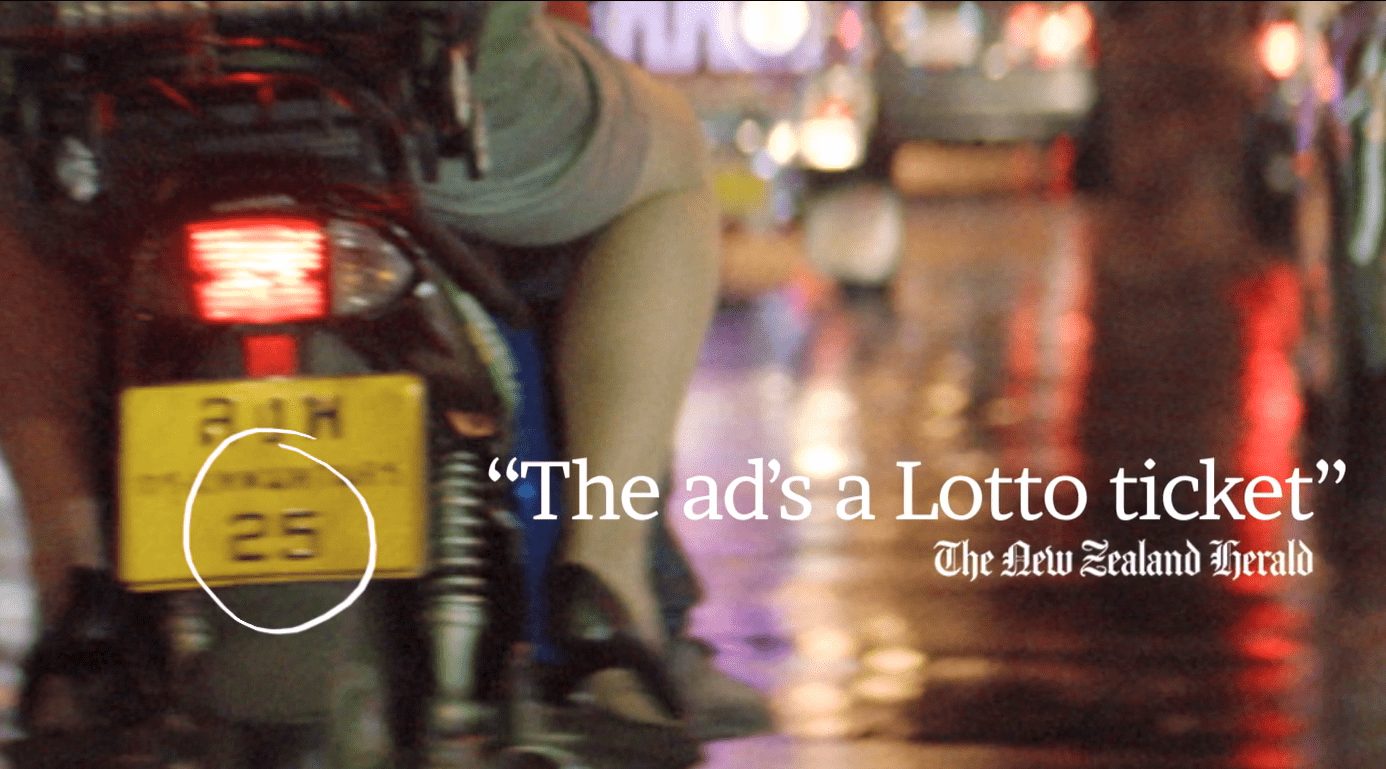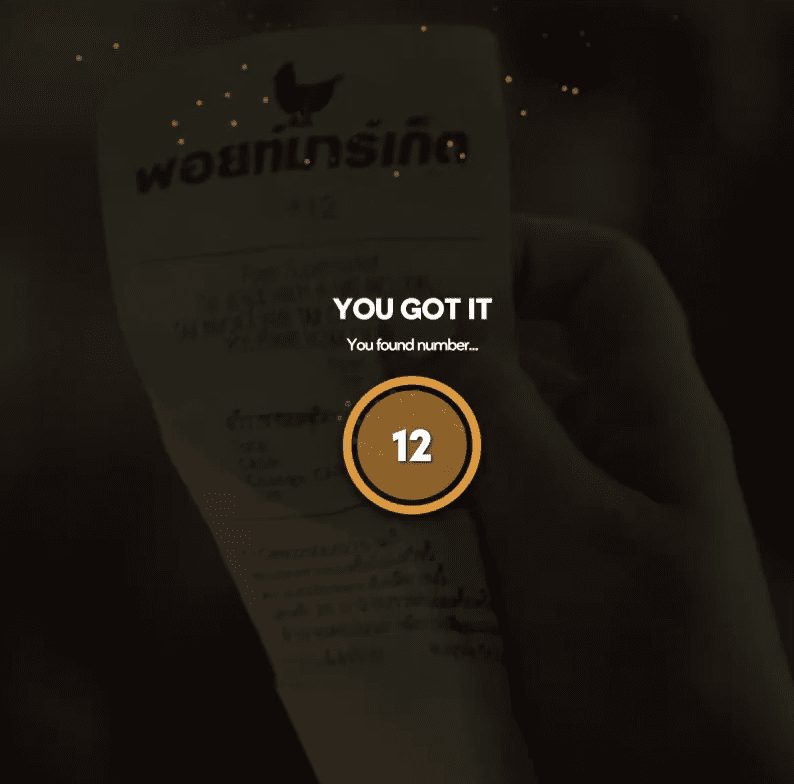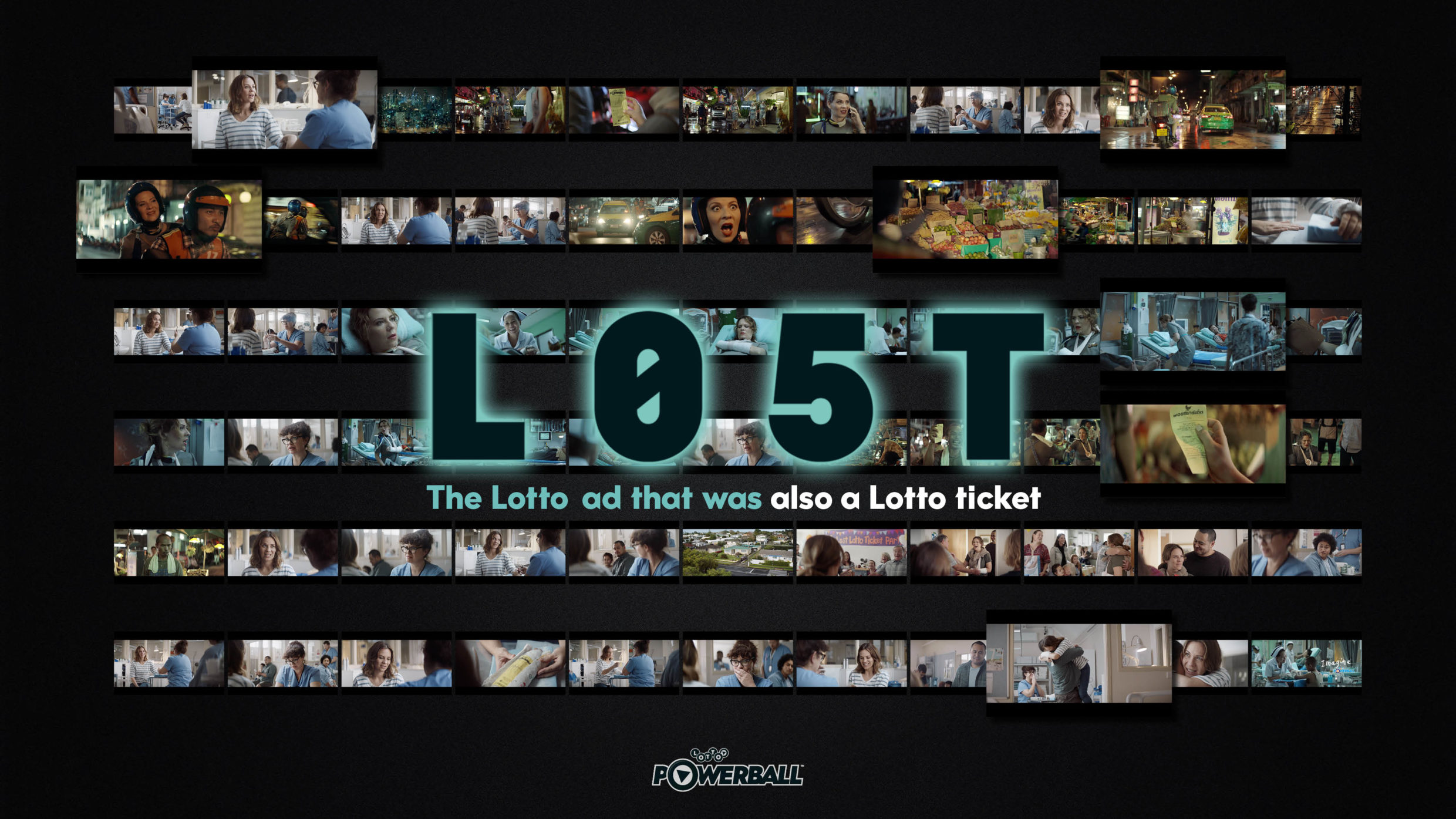L05T
Best Use of Video or Moving Image
We didn’t want to give developers an edge over the public, by finding the numbers via the code, but also had to consider performance, such as giving instant feedback for each click/tap.- DDB Group New Zealand Team

Q: Can you briefly describe your project and the concept behind it? A: Lotto players range from 18-108 with the bulk of their players over 45. Because of this Lotto tend to spend their budget on a big TV ad each year, because they see the results. So, Lotto wanted to create another TV ad, to ensure we reached the older players. But we also needed the ad to be relevant to the younger, online market. So we created a Lotto ad that was also a Lotto ticket. Just like a Lotto draw there were 8 numbers, which were hidden in the ad. Viewers needed to find 7 to create their ticket and be in to win. The idea of searching for a ticket was also the plot of the ad, which was about a woman who loses her winning ticket. So as she was searching, the audience was too. Lotto players range from 18-108 with the bulk of their players over 45. Because of this Lotto tends to spend their budget on a big TV ad each year, because they see the results. So, Lotto wanted to create another TV ad, to ensure we reached the older players. But we also needed the ad to be relevant to the younger, online market. So we created a Lotto ad that was also a Lotto ticket. Just like a Lotto draw there were 8 numbers, which were hidden in the ad. Viewers needed to find 7 to create their ticket and be in to win. The idea of searching for a ticket was also the plot of the ad, which was about a woman who loses her winning ticket. As she was searching, the audience was too.

Q: Talk about your initial prototypes. How did those ideas change throughout design and execution? A: Building a prototype upfront was key for the project. It allowed us to bring the client on board early, and for us to craft the experience and experiment on different devices and posting test links on social channels. Once we were happy we had nailed the experience via the prototype, the design team had a really clear guide to craft the design. The designs took inspiration from the bustling nightlife of Bangkok, where the TV ad was shot.
What breakthrough or “a-ha” moment did you experience when concepting or executing this project?
We wanted an experience that was user-friendly, game-like and fun. We also needed to make sure the game worked seamlessly on all devices as we estimated 80% of traffic would come through mobile social channels. And we wanted to create a fair experience. We didn’t want to give developers an edge over the public, by finding the numbers via the code, but also had to consider performance, such as giving instant feedback for each click/tap. We did this by cleverly obscuring the front end code, then adding solid backend validation. Finding this balance between performance and security paid off, when the public started feverishly clicking on the numbers, registering over 10 million click events.
Q: What web technologies, tools, or resources did you use to develop this? A: We used three.js, WebGL, and GreenSock for the animation of the game elements.
Q: What influenced your chosen technical approach, and how did it go beyond past methods? A: We wanted to create an experience that was user friendly, game-like and fun. We also wanted to make sure that the game worked seamlessly on all devices, as we estimated that about 80 percent of traffic would come through mobile social channels. Before we even started the design, our Lead Front End Developer built a prototype of the experience. Through experimenting with the prototype, we noticed that when opening links within the Facebook app, the page loads within the app and is locked to portrait mode. That meant our video and the game controls needed to work well in portrait on mobile. We refined the prototype based on our learnings and once we were happy, started crafting the design.
Q: How did you balance your creative and technical capabilities with the client’s brand? A: Overall, Lotto is visually quite a fun brand. So we needed to balance the aesthetic of the masterbrand with the feeling of being "lost" in Bangkok at night. We did this by building fun and colourful design elements into the discovery of each number on the site. After all, losing a Lotto ticket isn't fun. But finding it should feel fantastic. As mentioned earlier, another important part of Lotto's brand is the integrity and security of their games. This is why it was vital that 'L05T' was fair for all, and why extra care needed to be taken in preventing developers from cheating.

Q: How did the final product defy your expectations? A: We always had high expectations of the build, but the response to the campaign exceeded everyone's expectations. This campaign was targeted at New Zealand’s population of 5 million. During the campaign period Lotto saw an increase in sales of 7%. Social engagement was up 421%. There were 216,000 visits to the site and each person spent an average of 5:47 minutes looking for the numbers. That equates to almost four viewings of the ad, per person. In total, people spent 872 days watching our 90-second commercial.
Q: Why is this an exciting time to create new digital experiences? How does your team fit into this? A: This particular project was exciting because it was the first time Lotto’s brand campaign had gone beyond traditional TV advertising, and given an equal weighting to digital. Because the campaign was so successful, it’s given Lotto the confidence to start pushing further into the digital space, helping them to unlock new audiences and therefore grow sales.


